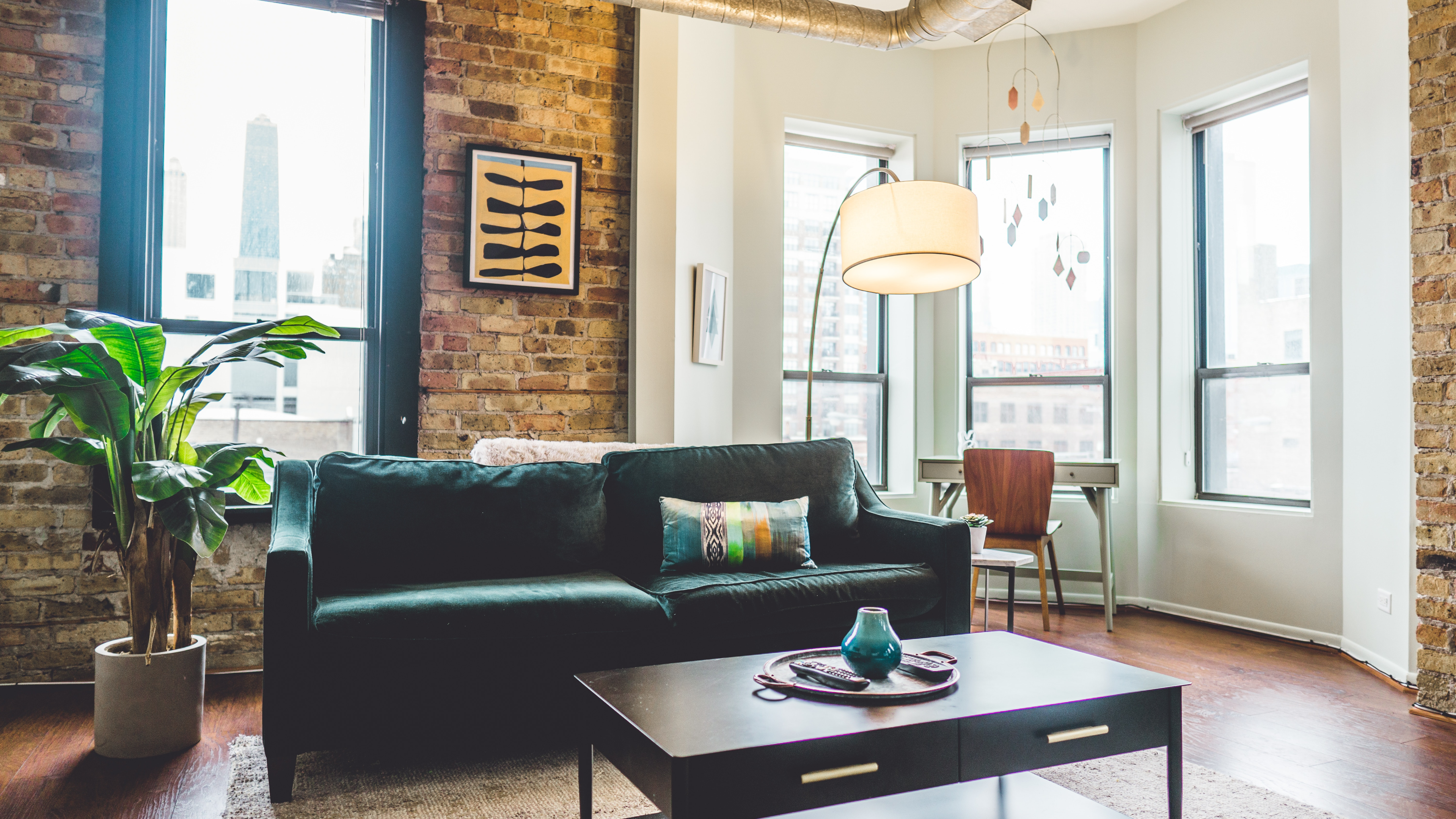Whether you’re relocating to an apartment in Indianapolis, IN or searching for an apartment in Houston, TX, you may have to pay a move-in fee. Move-in fees are another move-in cost to consider when you are looking for an apartment. Apartment move-in fees are a non-refundable deposit that a tenant pays when moving to a new apartment. The fee helps cover basic maintenance projects like paint touch-ups and apartment upgrades, like appliances.
You may be wondering: Are move-in fees legal? How much do they cost? What is a move-in fee vs a security deposit? What other move-in costs should I expect when renting an apartment or house? For answers to these questions and more, keep reading.

What is a move-in fee?
A move-in fee is a non-refundable amount of money that a landlord charges when you move into an apartment. They usually spend the move-in fee on minor apartment maintenance tasks like replacing locks and touching up paint. Move-in fees are different from security deposits, so you will likely be charged for both when you move into a new apartment.
Are move-in fees legal?
Usually, a move-in fee which costs about 20-50% of your rent is legal. Most states do not cap the amount a property manager can charge for a move-in fee, but some states do. If your move-in fee seems too pricey, you can always reference your local and state laws to make sure that the move-in fee is legal.
Are move-in fees refundable?
Unfortunately, move-in fees are not refundable. Because landlords use move-in fees to cover the cost of apartment maintenance before you move in or during your rental, they will spend the money on the rental property instead of returning it to you at the end of your lease.
How much does a move-in fee cost?
Move-in fees generally cost about 20-50% of your monthly rent. For example, if your monthly rent is going to be $1,800, your range would be:
$1,800 x 0.20 (20%) = $360 (low end)
$1,800 x 0.50 (50%) = $900 (high end)
In other words, you would likely be charged between $360 and $900 for your move-in fee. As with any fee a landlord charges, landlords try to keep move-in fees on the lower end so that they do not deter future tenants from filling out rental applications..
While move-in fees are not as regulated as security deposits, some areas impose restrictions on them. Read up on laws that affect your area to make sure any move-in fees you’re being charged are legal.
What does a move-in fee cover?
Move-in fees cover small upgrades that your property manager wants to make to your apartment. These upgrades can increase the value of the rental, and you can benefit from them too.
Some examples of projects a landlord may spend a move-in deposit on are replacing the locks in your apartment, reprogramming security systems, upgrading appliances or fixtures, polishing or replacing flooring or carpet, and other cosmetic touch-ups to property damage. If you’re curious where your move-in deposit is going, you can always ask your landlord.

The difference between a move-in fee and a security deposit
There are a few major differences between move-in fees vs security deposits. The primary difference between the two is that security deposits are more regulated by state and local laws. So, most regions will have more rules about security deposits. Below are more differences between the two.
Move-in fees
Move-in fees are non-refundable. And, because they cover the cost of small to major repairs or updates, your landlord will often spend it before you move into your apartment or sometime during your lease.
The other major difference between security deposits and move-in fees is that property managers must store security deposits in a separate account that is interest-bearing, while there are often no laws dictating where move-in fees are kept.
Security deposits
Unlike move-in fees, security deposits are refundable. Your property manager can only withdraw money from the tenant’s security deposit if you owe rent at the end of your lease, or if your apartment requires maintenance before the next resident moves in. Property managers usually do not spend security deposits until you are moving out of your apartment, and they can see what projects need to be done before they rent the place again.
At the end of your lease, your property manager must provide you with a statement which shows where all security deposit fees were spent. For example, let’s say you put down a $800 security deposit. When you move out, your carpets need to be cleaned, and a window screen needs to be replaced, which all costs $300. You would then only get $500 of your $800 security deposit back. And your landlord will send you a statement showing you how the other $300 was spent.
The benefits and drawbacks of a move-in fee
There are a few benefits to move-in fees. First, you know exactly how much your move-in fee will cost when you move in. Second, they help your landlord make necessary updates to your apartment so that it is tidier when you move in. Last, move-in fees are often less expensive than security deposits.
However, there are some downsides. Unfortunately, a move-in fee is a non-refundable fee. And, they aren’t always capped by local laws, so your landlord may be able to charge a tidy sum for a move-in fee. But most landlords will try to keep it lower in order to attract new tenants.
The benefits and drawbacks of a security deposit
Of course, the first benefit of security deposits is that they are refundable. So if you keep your apartment tidy and don’t do any damage to the apartment while you live there, you will likely get most or all of your security deposit back when you move out. Second, security deposits are more regulated by the government, so you’re more likely to be charged a reasonable amount.
Unfortunately, security deposits are typically more expensive than move-in fees. In fact, security deposits are usually equal to about one month’s rent, while move-in fees are roughly 20-50% of a month’s rent. And, although security deposits are refundable, you will never know how much of your security deposit you’ll get back until the end of your lease. So, you may be surprised at the end of your lease when you get none of your $800 security deposit back.
Can landlords impose both a move-in fee and a security deposit?
In many cases, a landlord will ask for both a move-in fee and a security deposit. This is not only legal, but it is also very common, as your landlord will likely want to make upgrades to the unit before you move in and clean up the unit when you move out.
Sometimes, a landlord will only charge one fee or the other, not both. For instance, with short-term leases, your property manager may be more likely to only use a move-in fee because it is unlikely that you will do much wear and tear to an apartment in only a month or two. Alternatively, a landlord may only use a security deposit if you are moving into a high-cost or luxury apartment, as damages to those apartments can be very expensive to cover costs.
Can you negotiate a move-in fee?
Move-in fees are negotiable, although property managers usually don’t have a lot of flexibility. If a move-in fee is too expensive for you, you can offer to pay it in installments, or you can try to negotiate to pay less overall. You can also research move-in fees at comparable apartments near you to negotiate a lower charge.

Other unanticipated costs and fees
There are many costs and fees that come with renting a new apartment. Outlined below are the various move-in costs you may have to pay, but keep in mind that not all landlords charge all of the following fees. Also, know that additional fees vary a lot based on where you live. If you live in an area where land is more expensive, most of the costs below will be more expensive as well.
Administrative fee
Landlords charge an administrative fee when you apply for an apartment to cover the cost of taking the time to read your application. Sometimes, administrative fees include the holding fee, and other times, they will be charged separately. Admin fees are usually $50-$200, and they are sometimes regulated by state laws.
Rental application
Rental application fees cover the cost of processing your application, and they often include the cost necessary to run a background check and a credit check for potential renters. They are usually $100 or less, but they vary by state.
Holding fee
If you want to make sure no one else gets the apartment you have your eye on, you can often pay a holding fee, once you submit your application. Holding fees range but are usually between $100 and $400, depending on the value of your apartment.
First & last months’ rent
Property managers will sometimes charge you for first and last months’ rent in addition to a security deposit, when you move into a new apartment. Charging these fees provides insurance to the landlord. Just in case they end up with an unreliable renter who skips rental payments, they can still keep the renter’s security deposit as well as their last months’ rent.
Pet deposits, pet fees & pet rent
Having a pet in an apartment can be expensive.
Pet deposits and pet rent are becoming more common, especially in urban areas like San Diego, CA. Pet deposits are a fee you pay at the beginning of your lease, and they usually range from $200 to $500. They are refundable at the end of your lease if your pet doesn’t cause any damage to the apartment.
Pet rent is something you pay every month you have a pet in your apartment. Landlords usually charge somewhere from $25 to $100 each month for pet rent. This charge is non-refundable, as it is part of your monthly rent.
A pet fee is a non-refundable, one-time fee that you pay at the beginning of your lease. Pet fees allow you the privilege of having a pet in your apartment. They are probably the least common of these three, pet-related charges.
Utilities
Unless utilities are included in your rent, you will have to pay additional utility costs every month to cover your electricity, garbage, gas, sewer, and water usage. Utility costs are variable, but you can expect to pay around $250 per month in utilities.
Storage
If your apartment building offers storage, you may have to pay extra to utilize it. While the average storage unit at a separate storage facility costs $190 per month, apartment buildings usually charge less than this, as units are shared between residents. Or, storage units in an apartment may be smaller or offer less climate control than the average storage space at a storage facility.
Parking
Most apartment buildings offer covered or garage parking, almost always at an additional cost. Parking costs range from $0 to over $500 depending on where you live and how secure the apartment building’s parking is. Generally, the closer to a major urban area you live and the more security measures the building takes, the more you will pay for parking, even for tandem parking. $0 parking fees are usually only found in rural or distant suburban areas.
The bottom line for move-in fees
Move-in fees are just one of many payments you may have to make when you move into a new apartment. They can help improve the apartment you are living in, although they are non-refundable.
When you begin your apartment search, keep in mind that there are many payments you’ll have to make. Make sure to ask your new property manager what all of the move-in charges are so that you can ensure that you are staying within your budget. And, don’t be afraid to negotiate.



























 United States
United States Canada
Canada